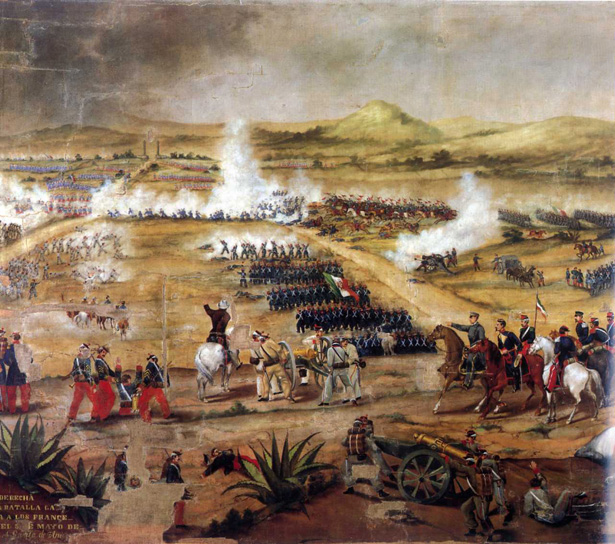A Misconception about “Cinco de Mayo”
Happy Cinco de Mayo! In case you missed it the first time around, we are reposting a popular blog post from 2013 written by Sue Ottignon, Research Support Librarian for Languages & Literatures that answers the question, once and for all, what Cinco de Mayo commemorates. Always ask a librarian!
Wait!! Before you make the mad dash to enjoy all those delicious salsa combos you made to kick off your annual “Cinco de Mayo” celebration, I have some little-known facts to share with you about this day.
If you thought Cinco de Mayo was Mexico’s Independence Day, you would be mistaken! Mexico’s Independence Day is September 16th. Yup, you heard me. It was on that September day, in 1810, Mexicans declared their independence from Spain, which had controlled the territory referred to as “New Spain,” since 1521 when Hernán Cortés conquered the Aztec Empire. If you plan to add Independence Day, aka “Grito de Dolores,” to your celebration list, be sure to check out the article in the Encyclopaedia Britannica[1]on Mexico’s struggles!
So what’s so great about the 5th of May? Although it is not an official holiday in Mexico, it does commemorate the Mexicans’ victory over the French on May 5, 1862, in the town of Puebla; thus, the holiday is called “El Día de la Batalla de Puebla,” and there are celebrations. The Mexican-American community, from the western states, began the observance shortly after the event. Ultimately, the day’s events evolved within the US as recognition of the Mexican culture and heritage. Moreover, the U.S. Congress recently issued resolutions[2] recognizing the historical significance of Cinco de Mayo. The Congressional Record, for the House of Representatives, recorded on June 7, 2005, a concurrent, non-binding resolution recognizing the historical significance of the day,[3]
Selected resources about “Cinco de Mayo”:
Arellano, Gustavo. Interview by Michel Martin. Arts & Life. Natl. Public Radio, 5 May 2011. NPR.org. Web. 29 Apr. 2013.
“Cinco de Mayo.” Encyclopædia Britannica. Encyclopædia Britannica Online Academic Edition. Encyclopædia Britannica Inc., 2013. Web. 23 Apr. 2013.
Ganster, Paul. “Cinco de Mayo.” Encyclopedia of Latin American History and Culture.
Ed. Jay Kinsbruner and Erick D. Langer. 2nd ed. Vol. 2. Detroit: Charles Scribner’s Sons, 2008. 413. Gale Virtual Reference Library. Web. 23 Apr. 2013.
Hamnett, Brian. “Puebla, Battle and Siege of.” Encyclopedia of Latin American History and Culture. Ed. Jay Kinsbruner and Erick D. Langer. 2nd ed. Vol. 5. Detroit: Charles Scribner’s Sons, 2008. 401-402. Gale Virtual Reference Library. Web. 23 Apr. 2013.
“Monthly Record of Current Events: Mexico.” Harper’s New Monthly Magazine. 25.146 (1862): 261. Making of America, 1815-1901. Web. 29 April 2013.
“News from San Francisco.” New York Times (1857-1922): 1. Jun 01 1862. ProQuest. Web. 27 Apr. 2013.
Pérez, Daniel Enrique. “Cinco de Mayo.” Confluencia: Revista Hispánica de Cultura y Literatura 27.1 (2011): 210+. Academic OneFile. Web. 23 Apr. 2013.
Recognizing Historical Significance Of The Mexican Holiday Of Cinco De Mayo of2007. H.R. Con. Res. 44. 7 June 2005. Web.
0 Comments »
No comments yet.
RSS feed for comments on this post. TrackBack URI

